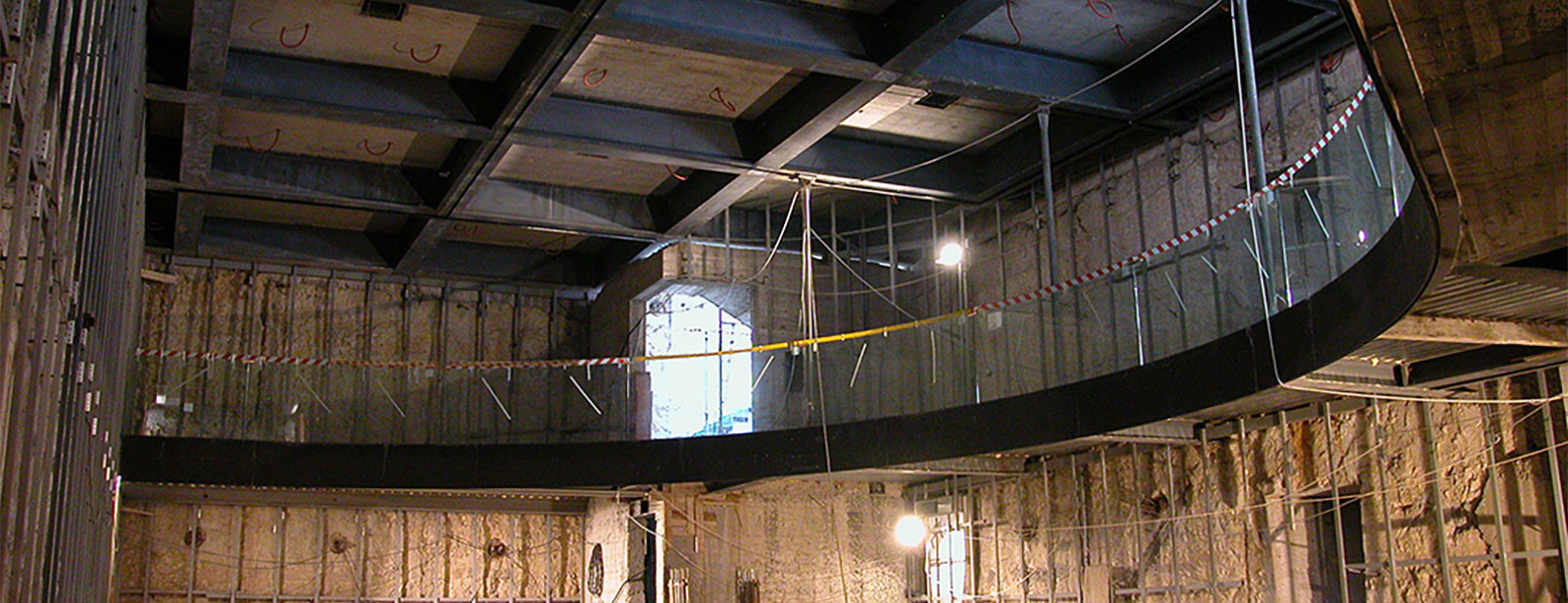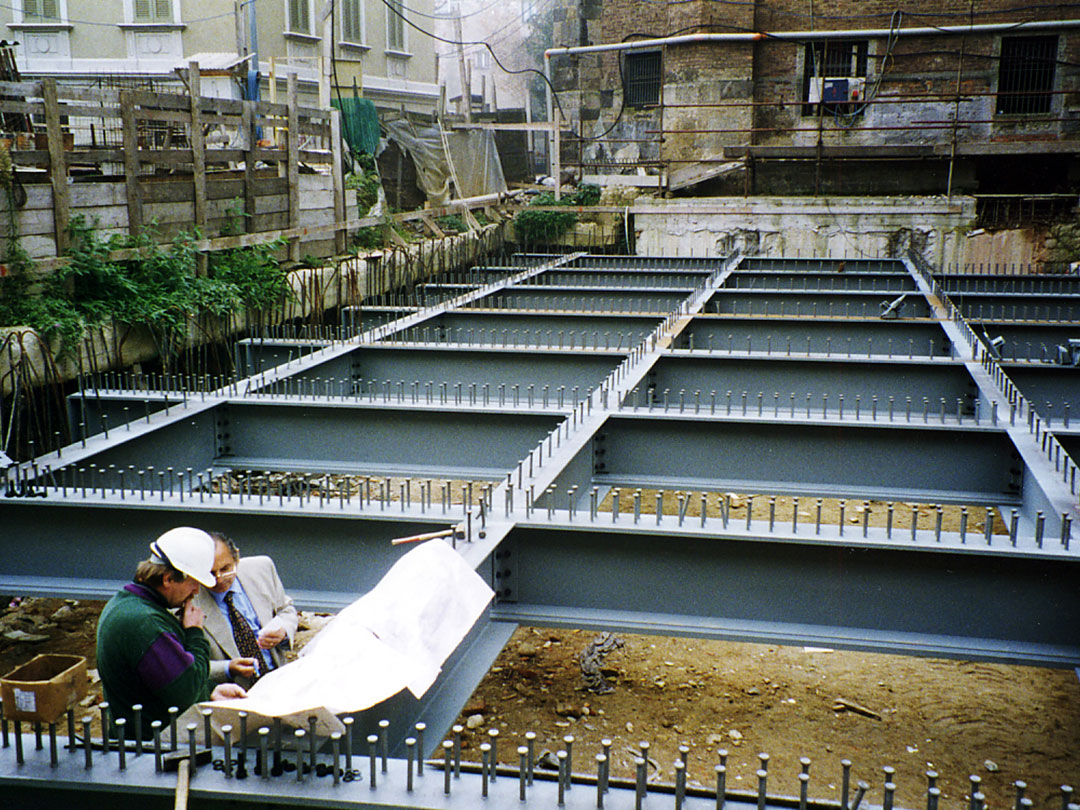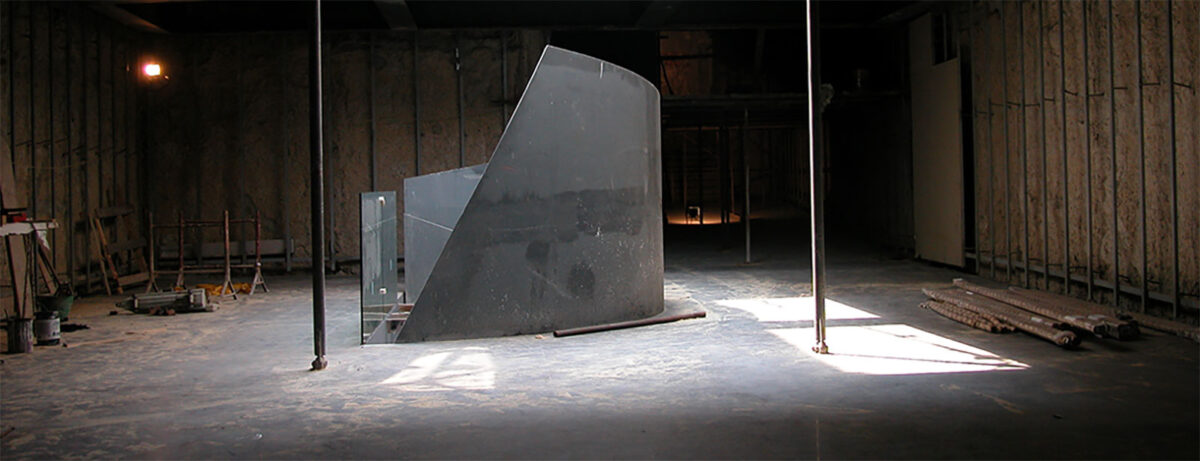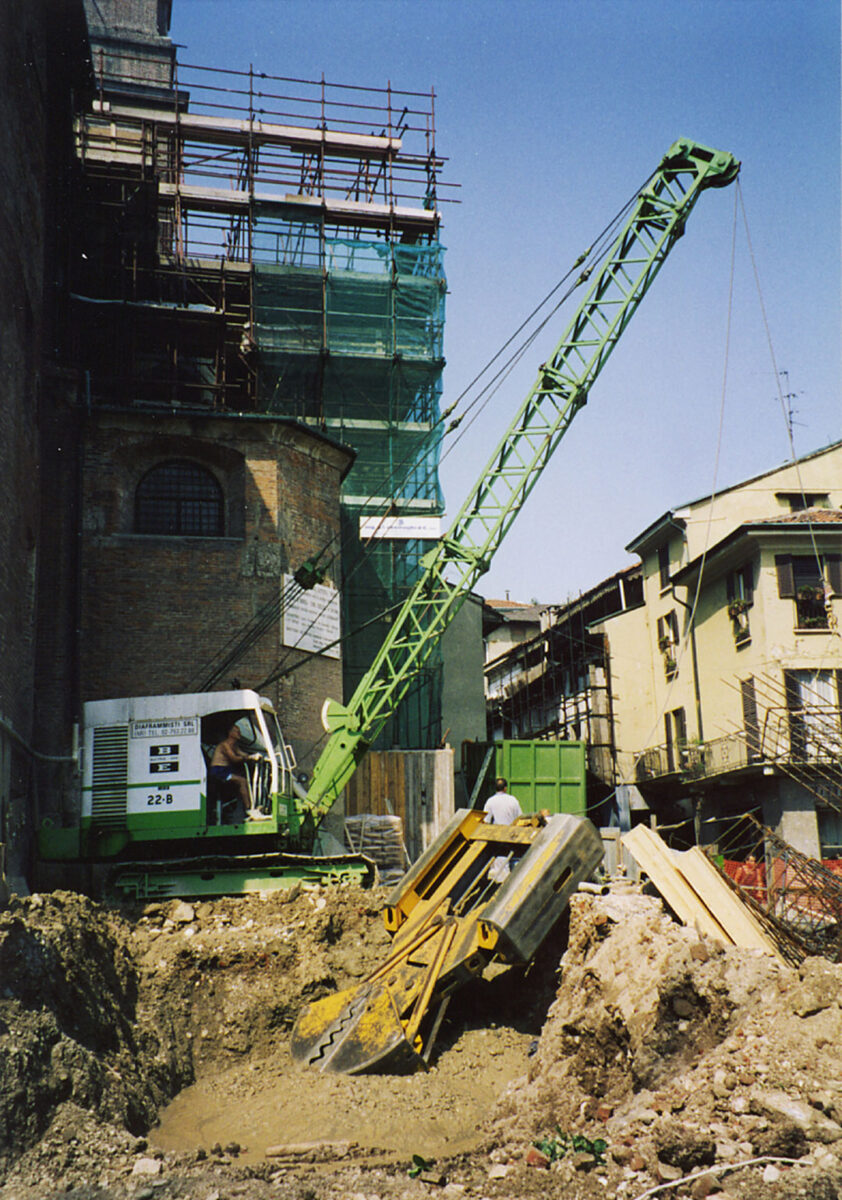The new section of the Museum – completely underground – has been built next to the Cathedral along via Lambro on the north side of the Basilica.
The floor plan of the new hall is -12 meters from the height of that of the Church and for its construction were used specific techniques for underground works.
The main concern is the proximity to the historic monument and the risk of failure or injury: hence the need to proceed with extreme caution.
This is the sequence of work:
- Consolidation of the ground below the foundations of the Duomo with cement and bentonite injections
- construction of bulkheads (perimeter walls) in concrete with a thickness of 90 centimeters penetrated into the ground up to an altitude of -19 meters; in some areas, to reduce the thickness of the walls, was used the so-called technique of micropali or “Berlinese” which consists in the insertion into the soil of steel tubes of suitable diameter placed next to each other
- construction of the roof slab consisting of steel beams 70 cm high working together with a top concrete cast 30 cm
The slab thus constructed has a triple function:
- support the above load of the ground
- transfer a part of the thrust from the Duomo side to the opposite bulkhead
- holding the mezzanine in the hall by means of steel ties
At the end of the above works it was possible to start digging with removal of the resulting soil; during this phase they were also carried out on the bulkheads of the Duomo of steel ties attached in the ground for 18 meters long to avoid sagging, also static, of bulkheads.
The structure was then completed with the installation of the circular steel staircase and mezzanine.










